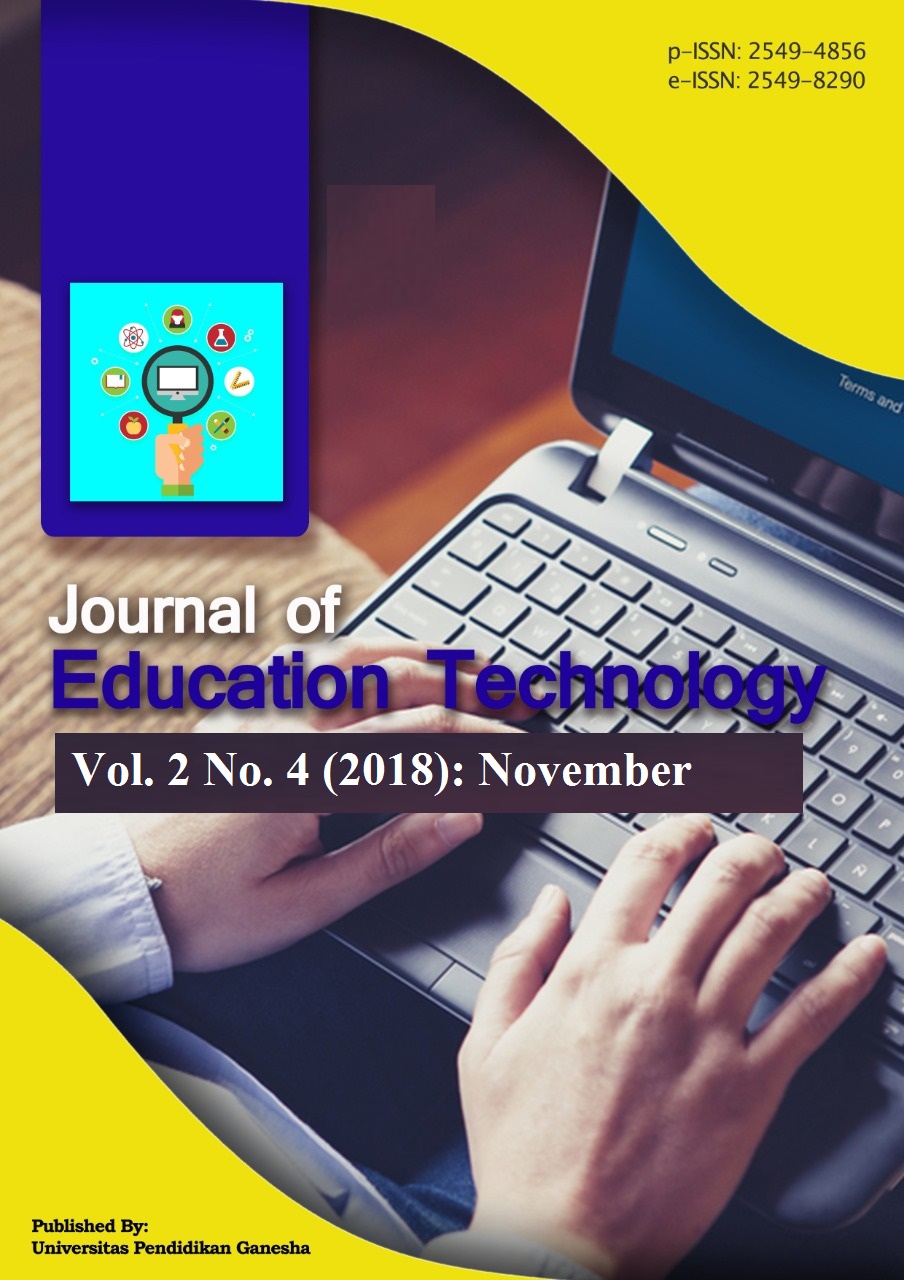PENERAPAN MODEL PEMBELAJARAN KOOPERATIF TIPE TEAM ASISSTED INDIVIDUALIZATION DENGAN REAL WORLD PROBLEM
DOI:
https://doi.org/10.23887/jet.v2i4.16545Keywords:
model pembelajaran kooperatif tipe TAI, real world problemAbstract
Tujuan penelitian ini adalah untuk mengungkapkan (1) praktis tidaknya penerapan model pembelajaran kooperatif tipe TAIdengan real world problem dalam pembelajaran fisika; (2) tingkat kepraktisan model kooperatif tipe TAI dengan real world
problem dalam penerapannya pada proses pembelajaran fisika. Penelitian ini menggunakan 6 langkah pada model
pembelajaran kooperatif tipe TAI dengan real world problem. Uji coba dilaksanakan pada kelas X materi momentum dan
impuls. Pengambilan sampel menggunakan teknik cluster sampling sehingga diperoleh satu kelas eksperimen yang terdiri
dari 34 siswa. Pada saat pembelajaran berlangsung, dilakukan observasi keterlaksanaan setiap fase model pembelajaran
kooperatif tipe TAI dengan real world problem. Berdasarkan hasil implementasi model pembelajaran dapat diketahui bahwa
(1) model pembelajaran kooperatif tipe TAI dengan real world problem praktis diterapkan dalam pembelajaran fisika (2)
model pembelajaran kooperatif tipe TAI dengan real world problem memiliki tingkat kepraktisan yang sangat baik dalam
penerapannya pada proses pembelajaran fisika di SMA.
References
Adeyemo, S. A. (2010). Background and Classroom Corelates of Students’ Achievement in Physics, International Journal of Educational Research and Technology, 1, 25-34.
Depdiknas. (2006). Peraturan Pemerintah RI Nomor 22, Tahun 2006, tentang Standar Isi.
Docktor, J. L., & Mestre, J. P. (2014). Synthesis of Discipline-Based Education Research in Physics. Physical Review Special Topics-Physics Education Research, 10, 1-58.
Hussain, A., Azeem, M., & Shakoor, A. (2011). Physics Teaching Methods: Scientific Inquiry Vs Traditional Lecture. International Journal of Humanities and Social Science, 1 (19), 269-276.
Kua, M.Y., Ulviah, L., Sawu, A.M., & Ngole,M. (2015). Analysis of the Speed of a Moving Object through the Application of Videopad to Teach Mechanical Concepts Based on a Real World Problem. Proceeding International Seminar on Scienxe Education - Harmonization of Science, Technology, and society (STS) in science Learning to Prepare 21st Century Generation (255-266). Yogyakarta: Universitas Negeri Yogyakarta.
Slavin, R. E. (2005). Cooperative Learning, Second Edition. Massachusets: Allyn & Bacon.
Trianto. (2009). Mendesain Model Pembelajaran Inovatif Progresif Konsep, Landasan dan Implementinya Pada KTSP. Jakarta: Kencana Prenata Media.
Warimun, E. (2012). Penerapan Model Pembelajaran Problem Solving Fisika pada Pembelajaran Topik Optika pada Mahasiswa Pendidikan Fisika. Jurnal Exacta, 10, 111-114.
Downloads
Published
How to Cite
Issue
Section
License
Authors who publish with the Journal of Education Technology agree to the following terms:
- Authors retain copyright and grant the journal the right of first publication with the work simultaneously licensed under a Creative Commons Attribution License (CC BY-SA 4.0) that allows others to share the work with an acknowledgment of the work's authorship and initial publication in this journal.
- Authors are able to enter into separate, additional contractual arrangements for the non-exclusive distribution of the journal's published version of the work (e.g., post it to an institutional repository or publish it in a book), with an acknowledgment of its initial publication in this journal.
- Authors are permitted and encouraged to post their work online (e.g., in institutional repositories or on their website) prior to and during the submission process, as it can lead to productive exchanges, as well as earlier and greater citation of published work. (See The Effect of Open Access)
















